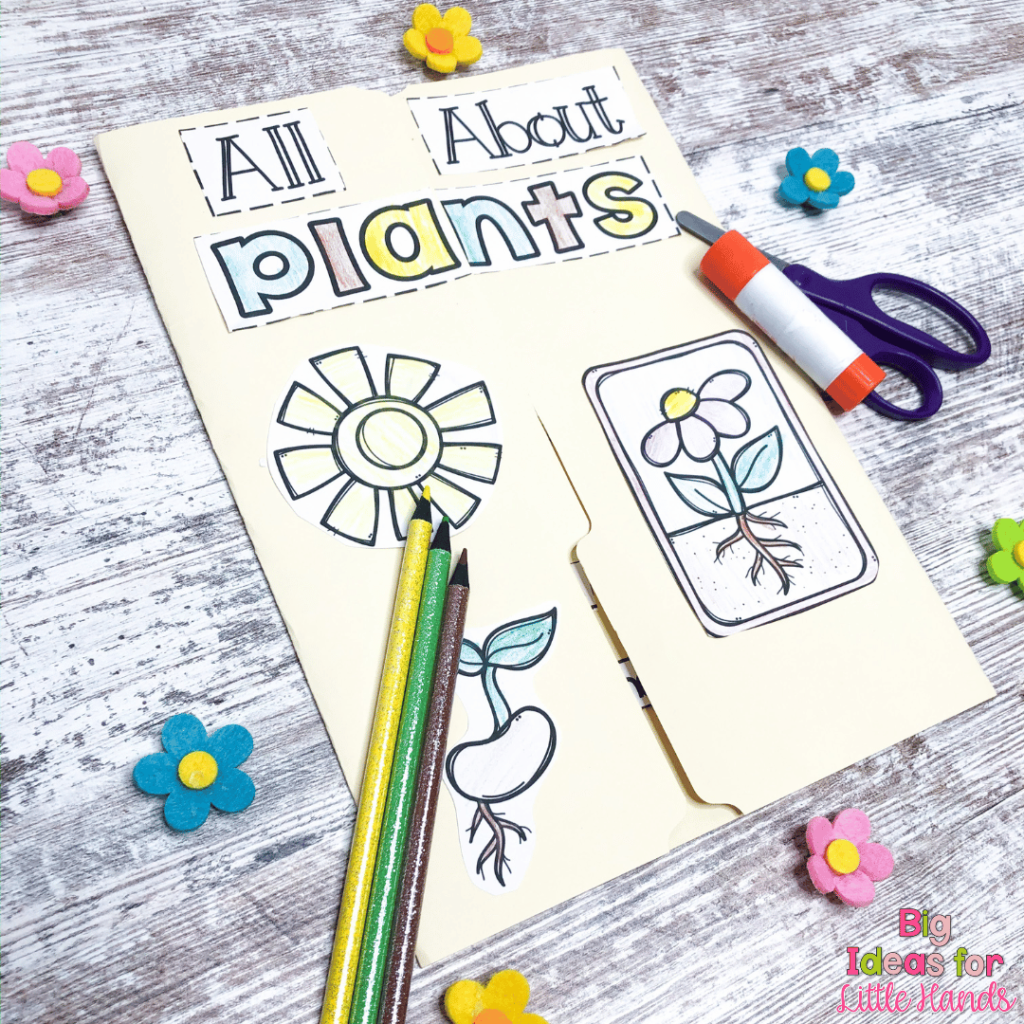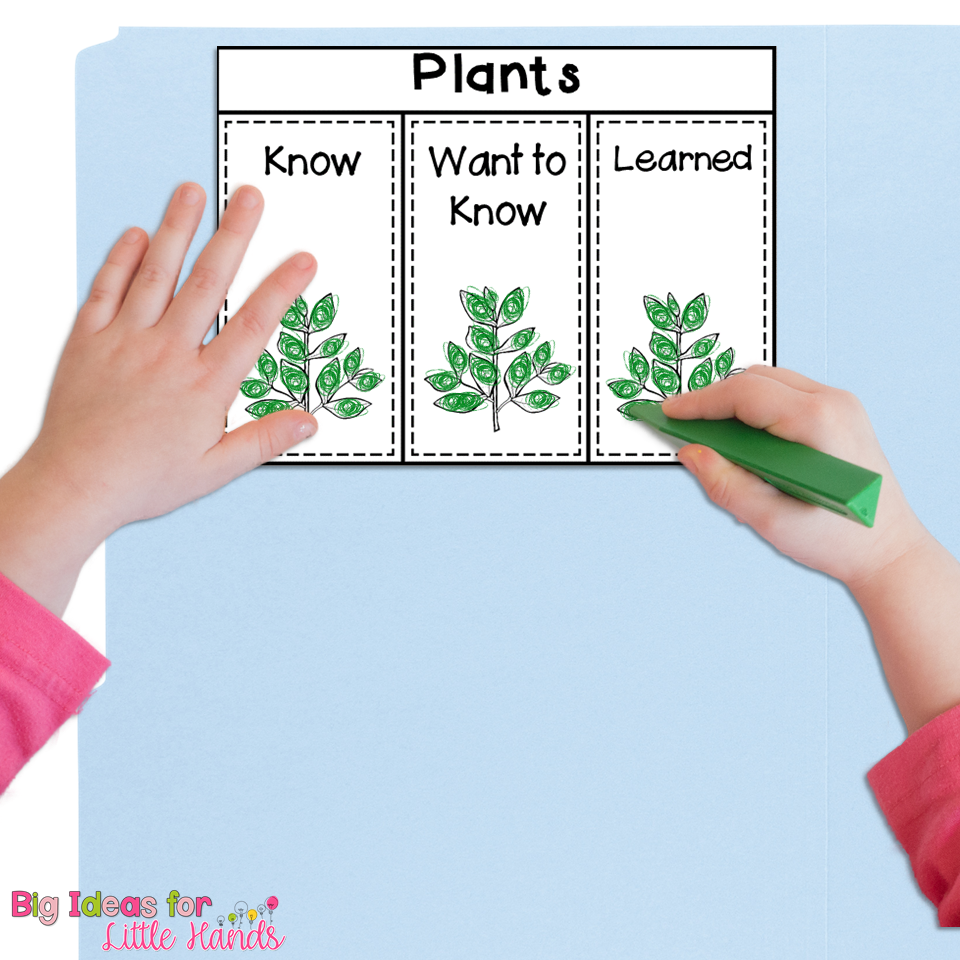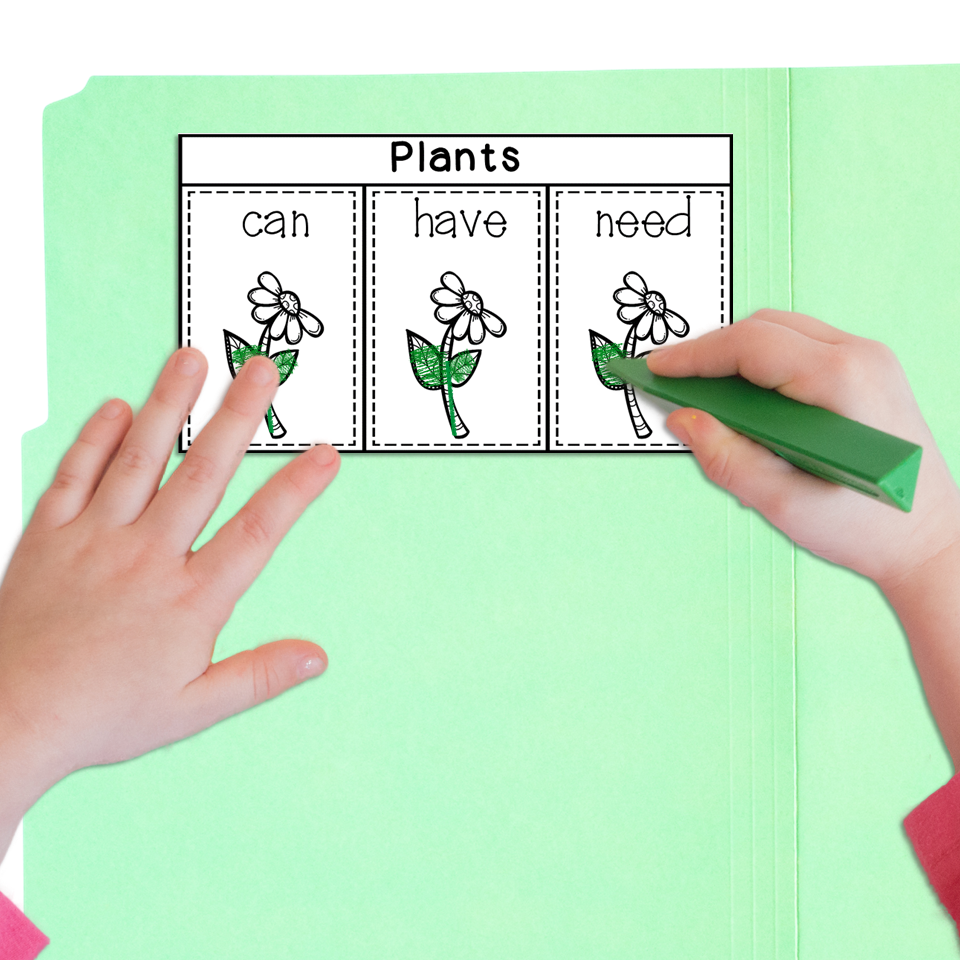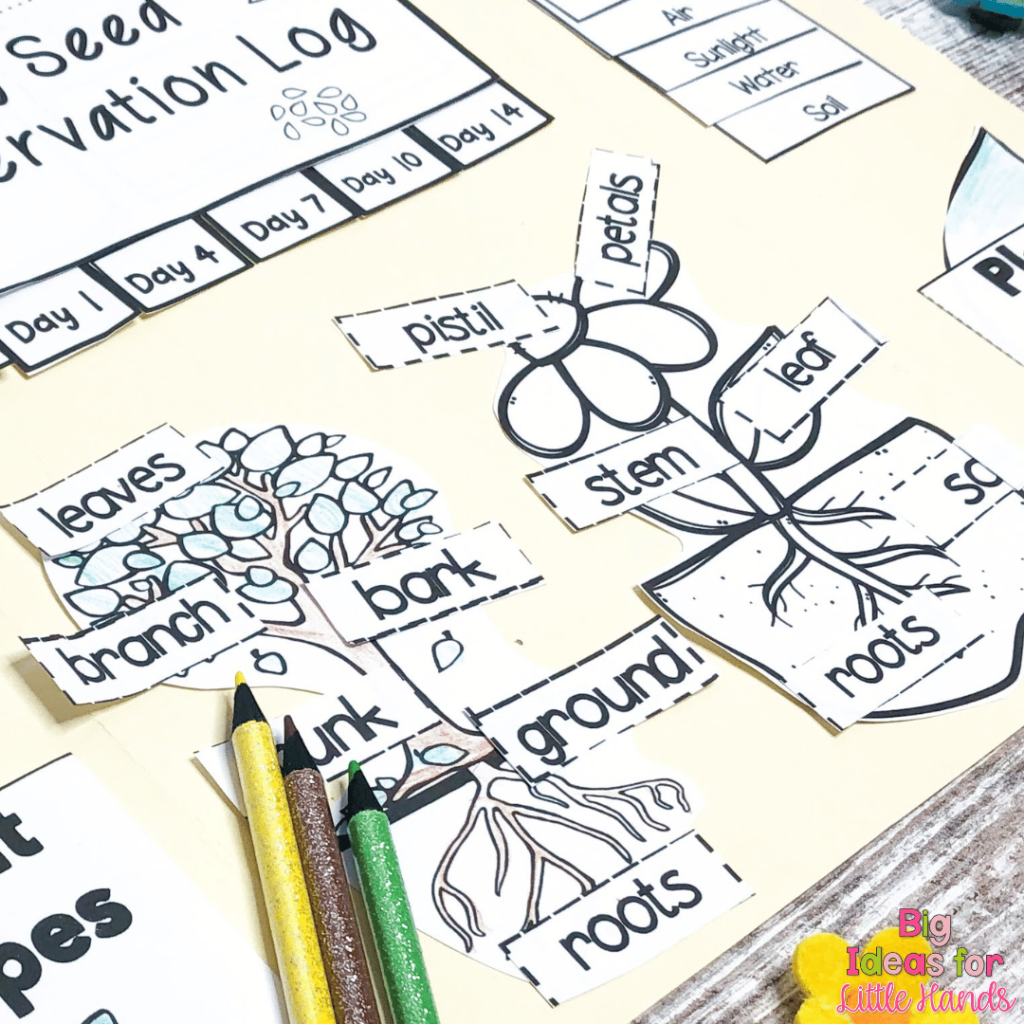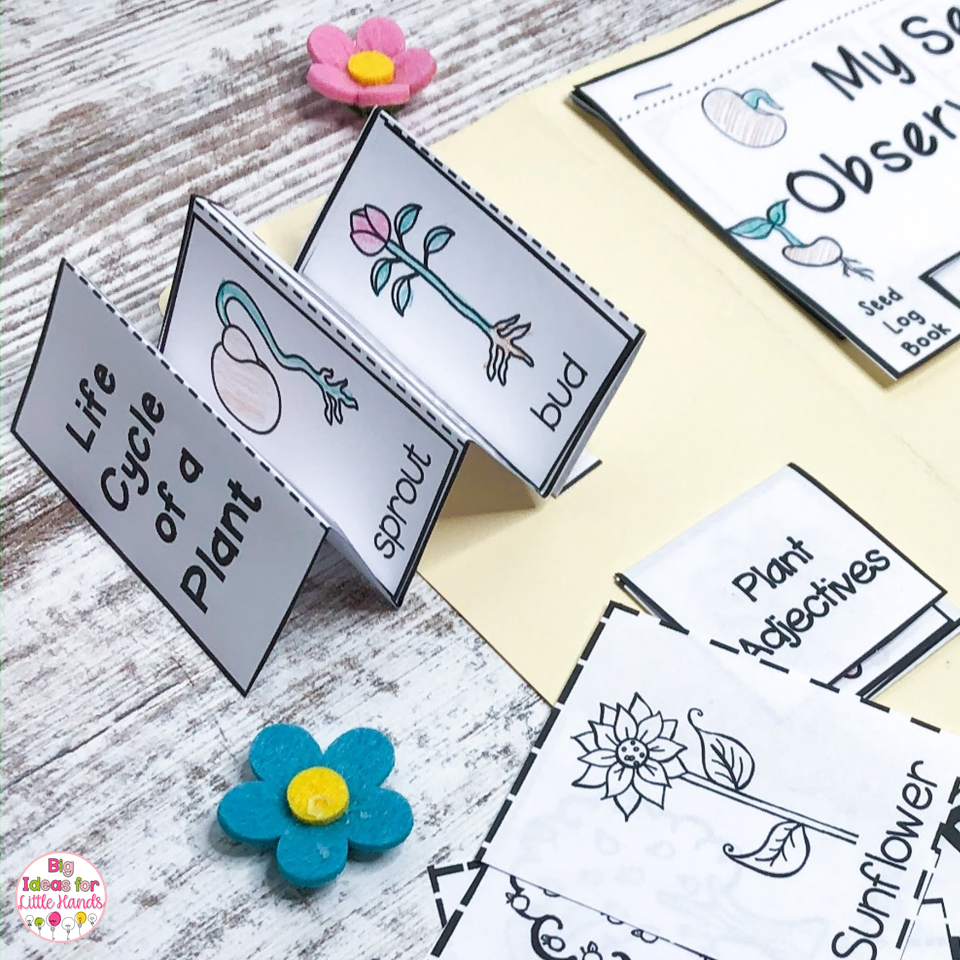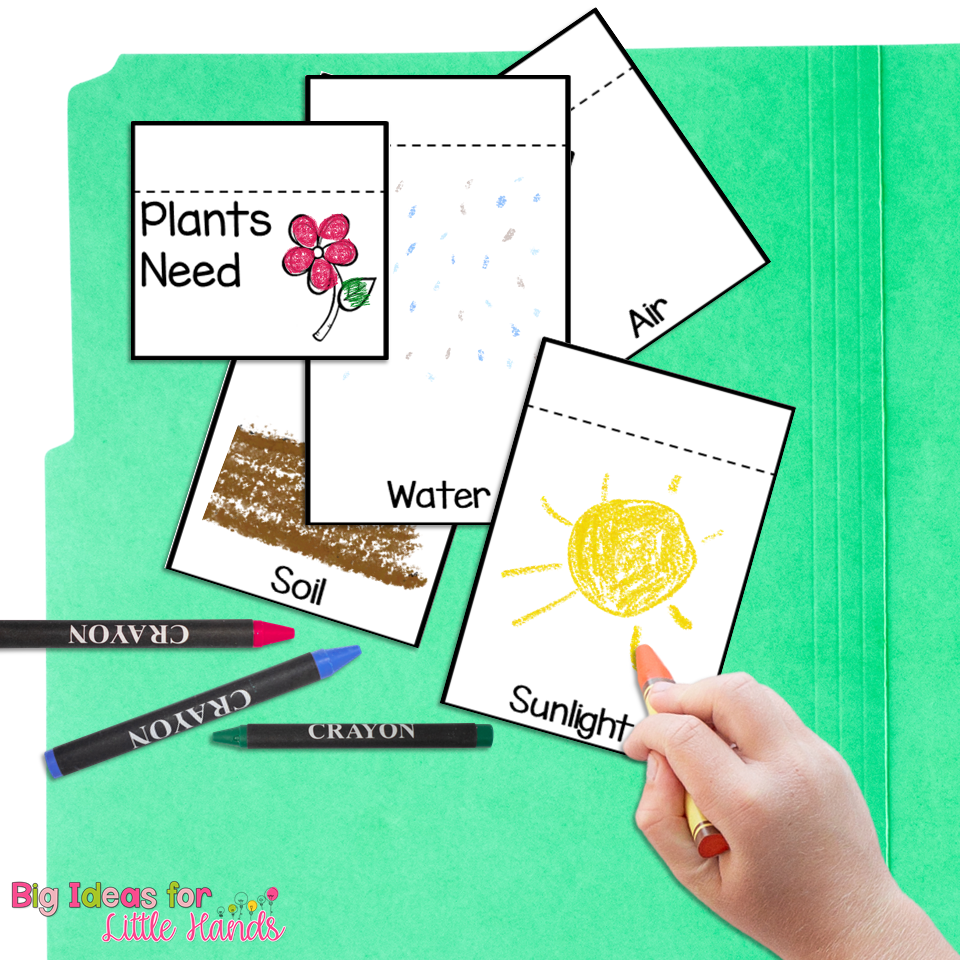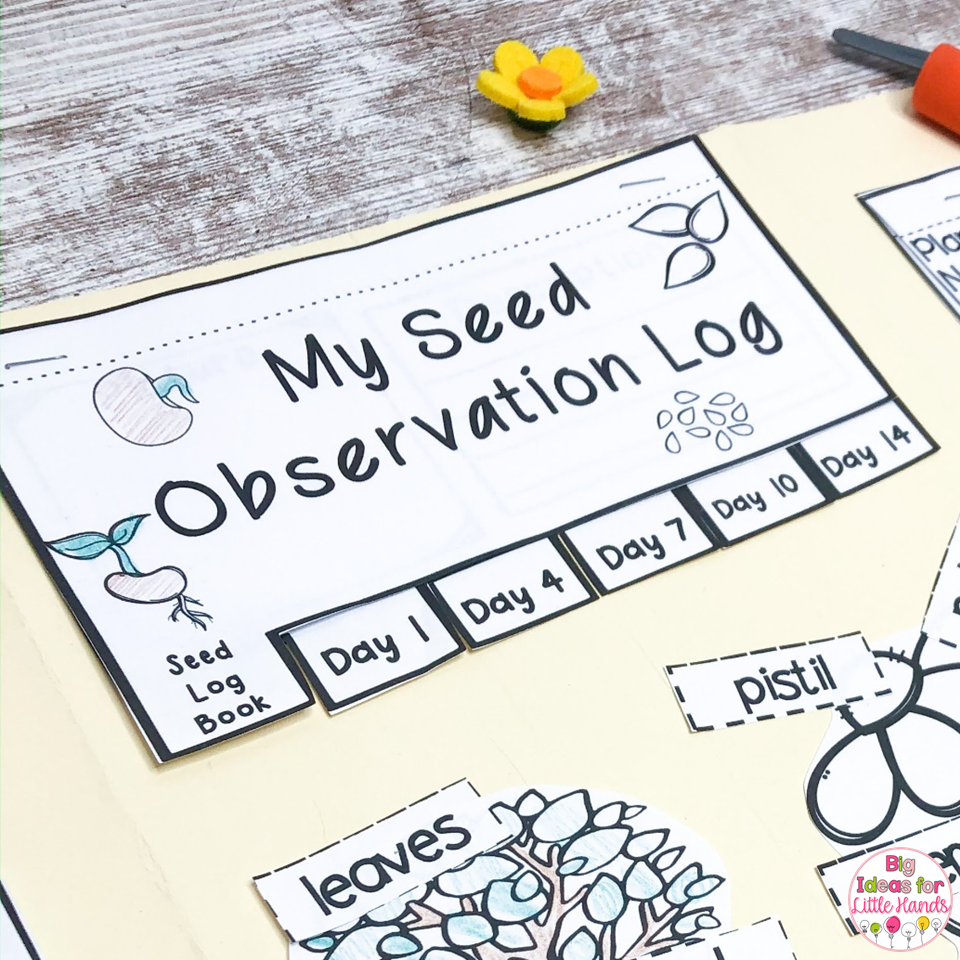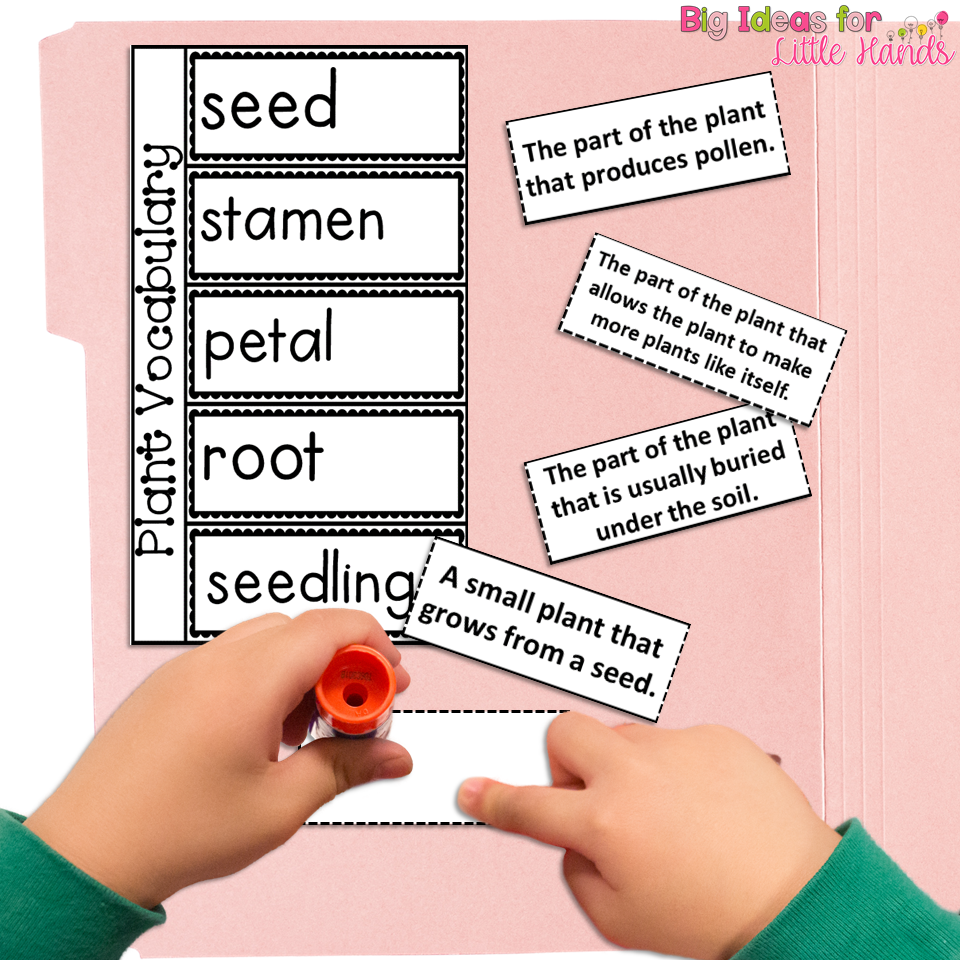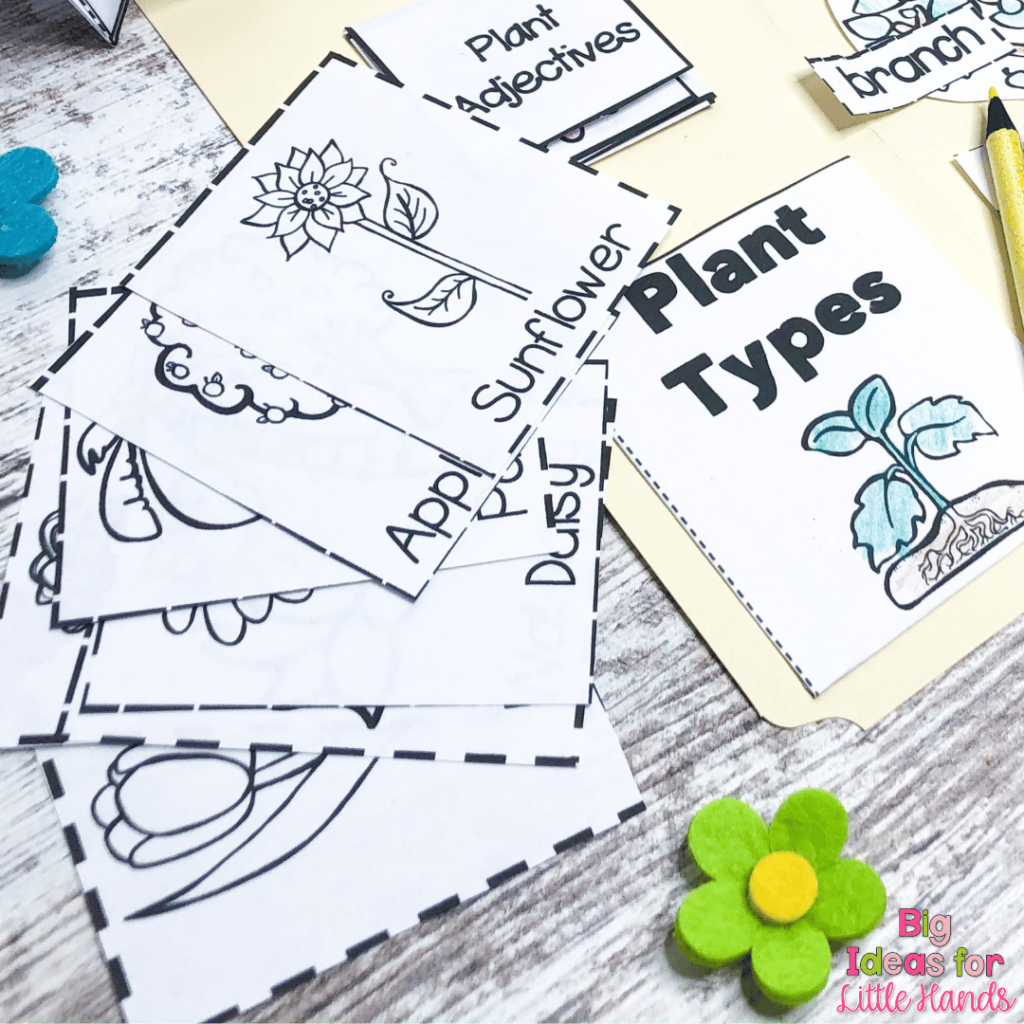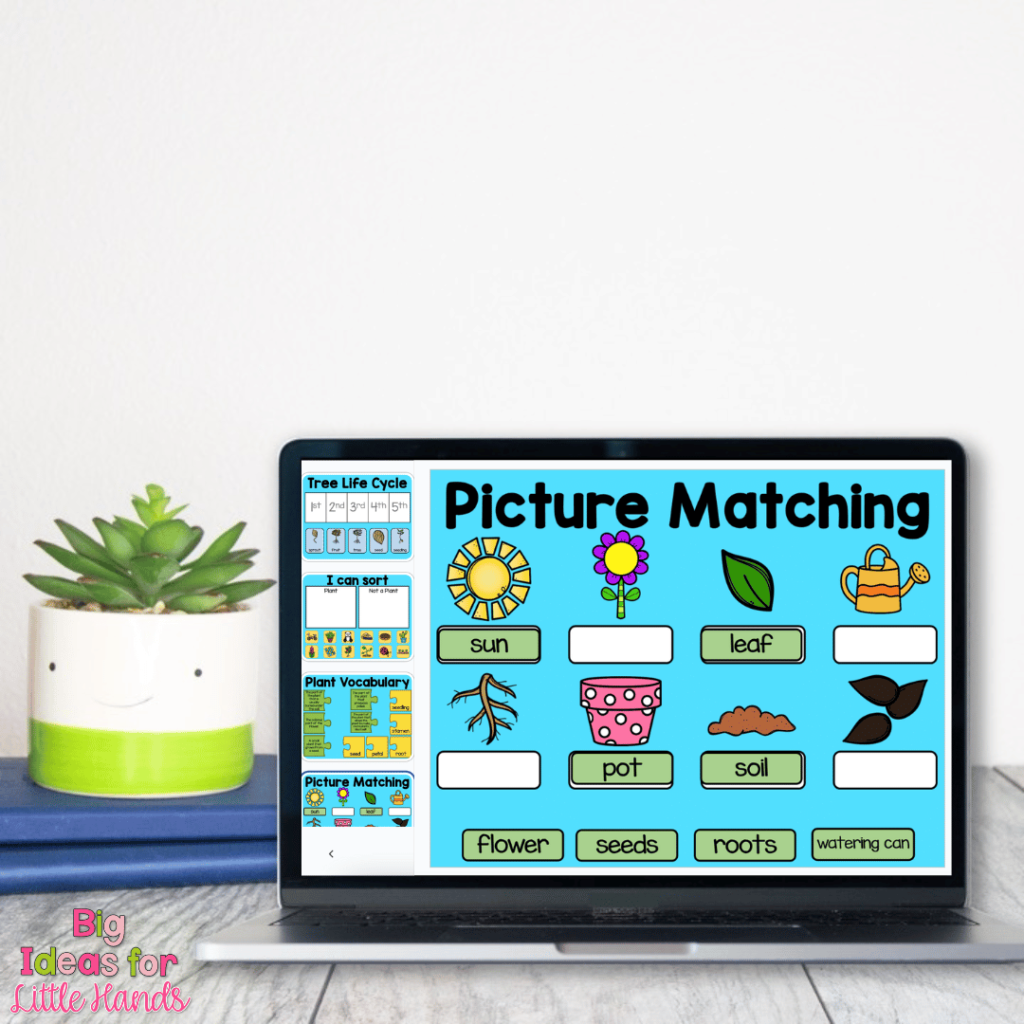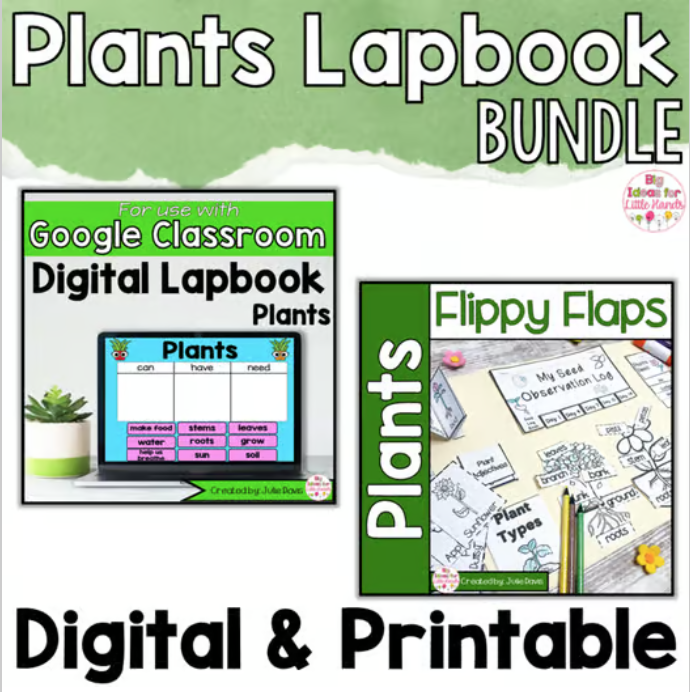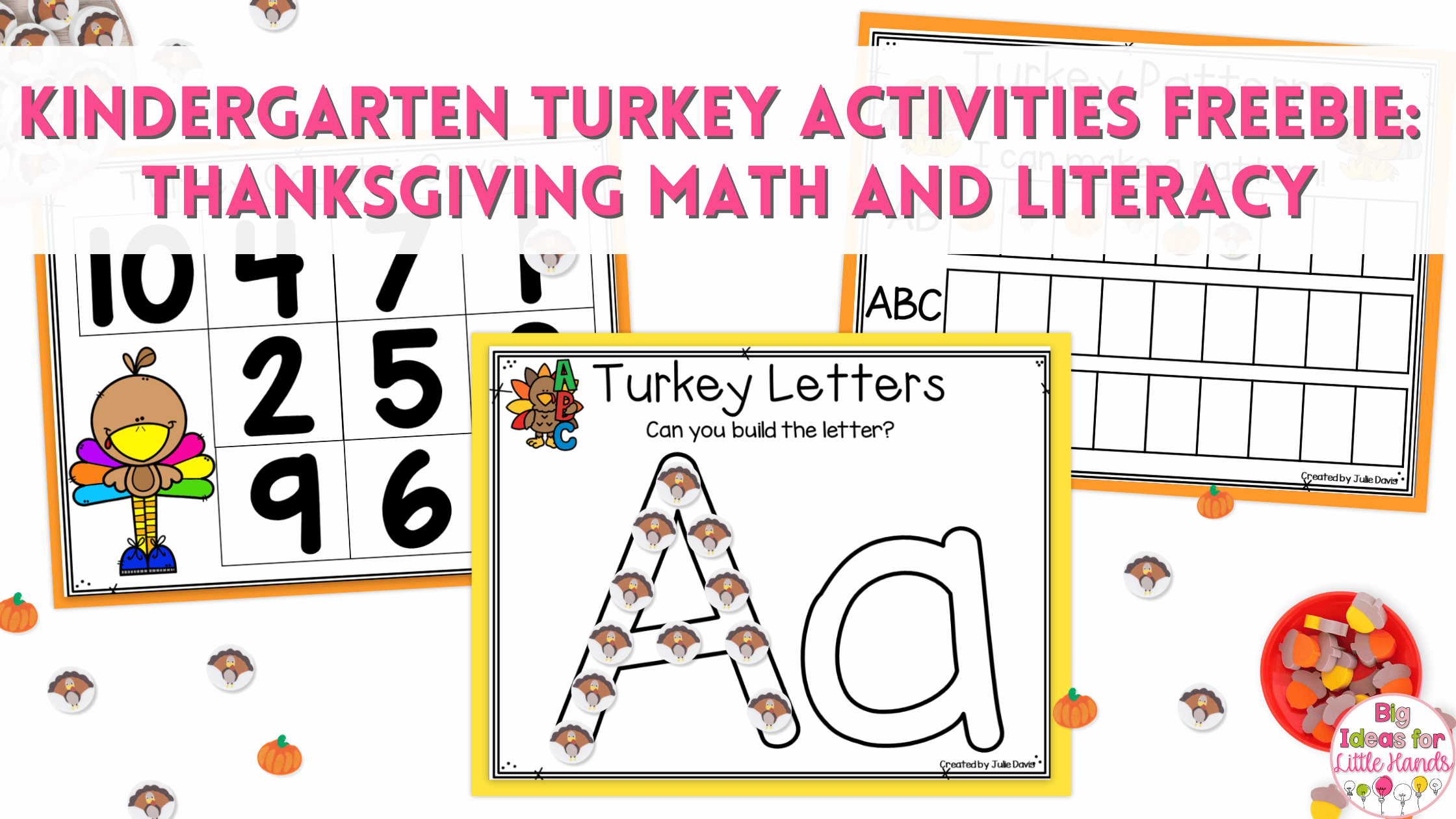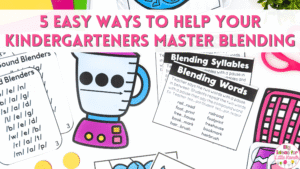Spring is such a fun time to explore science topics in the classroom. From weather and baby animals to plants and life cycles, it all connects to spring. What’s a better way to kick off the spring season than by learning about plants through fun and engaging plant activities? It’s how I kick off our spring science in my kindergarten classroom. And… today I’m sharing all our favorite plant activities so you can use them in your classroom, too!

What are Plant Lapbooks?
One of my favorite ways to incorporate science, literacy, and writing into one unit is by having my Kinders make these engaging plant lapbooks! Lapbooks are similar to an interactive notebook or science notebook, except that they are focused on only one topic. They are a great way to keep all of your students’ learning in one organized place. It’s also a great project to share with families to showcase their child’s learning throughout the unit!
A lapbook is the perfect project to complete while students are learning about a topic using many different types of activities. As each activity is completed, it’s glued into the lapbook, keeping it organized and easy to access. With younger students, I have found that they are so much easier to manage compared to a year-long science notebook.
I find lapbooks to be a great way to teach about plants and many other topics in my classroom. And, the students love creating a “book” with all of their learning!
Prepping Your Lapbook
One file folder per student is all that is needed to get started. At first, prepping a spring-themed lapbook may seem a little intimidating, but I promise it is as easy as 1, 2, 3!
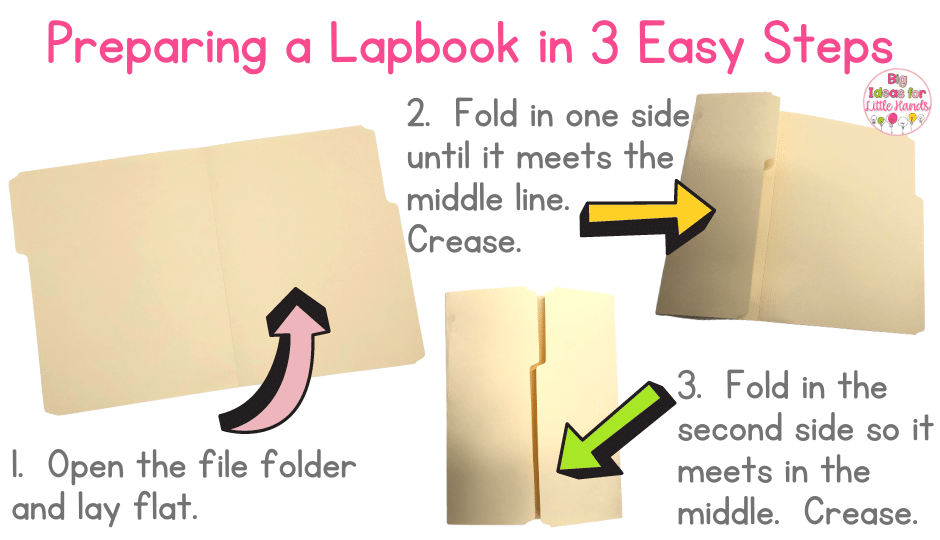
- Open the file folder and lay it flat horizontally.
- Using the center crease as your guide, fold one side in until it meets the center crease.
- Fold the other side in to meet the center crease.
That’s it! Open, fold, fold! At the beginning of the year, I set up the folders for my students. But, as the year goes on, we do it together. It’s a great way to get in some following directions practice.
8 Plant Activities for a Spring Lapbook
Plant lapbooks allow you to explore spring from a science perspective, which is important. We weave in math and language skills along the way to have a great cross-curricular unit of study. To help my students explore plants, we add 8 plant activities to our lapbook. It’s the perfect way to get students excited and ready to learn all about plants!
1. Plant KWL
One of my favorite ways to start every weekly theme is to see what prior knowledge my students have about the topic. A quick and easy way to do this is to create a KWL chart. We begin this process with a class discussion and an anchor chart. I ask students to share something they know about plants, and we add those things to the anchor chart. Then I ask them to think about what they want to learn about plants. Those thoughts and questions get added to the anchor chart, too.
Next, students use the anchor chart as a guide to fill in their Plant KWL flapbook. Under the first flap, students will write or draw things they already know about plants. Then they will add what they want to learn during our study of plants, and record that under the middle flap.
I always add all responses to the anchor chart, even if they are not completely accurate. When we learn a fact that is listed on the chart, we will put a star beside it. If we learn a fact that contradicts something on the chart, we will just draw a simple line through the fact and move it to a “misconceptions” box on our chart, and talk about why it is not an accurate statement.
At the end of our Plant Unit, we come back to the anchor chart and flapbook to record interesting facts that we have learned through our plant activities. It is always fun to see which facts the kids remember and that stick with them. I will record their responses in the last column of my chart as they write fun facts they learned during the week under their last flap. This is a great way to show their families what they learned about plants during the week.
2. Plants Can/Have/Need
I love a Can/Have/Need or Can/Have/Are chart! They are such a great way to summarize the important facts about a topic. When we work on summarizing nonfiction books, I use these charts and connect them back to what we have done in science. It’s a great way to reinforce those summarizing skills in a way that our young students really understand. The Can/Have/Need chart can be used as you teach about plants or at the end as a great review of what was learned. I have used it both ways successfully.
When completing this activity, I once again start with a class anchor chart. We complete the chart one section at a time. We start by focusing on things that plants can do. After students share some ideas, I have them fill in their lapbook chart. Facts like ‘Plants can grow’ and ‘Plants can make their own food’ go under this flap.
Next, we move on to the “Have” section. Here we focus on things that plants have. This is the perfect time to review the parts of a plant and their physical characteristics. After sharing some ideas for our class anchor chart, students will list the parts of a plant (or draw pictures of the parts) under the flap.
Last, we focus on the things that plants need. I ask students about the needs of plants, and we add them to our anchor chart. Then students think about what helps a plant grow and list or draw as many as they can under the flap.
3. Parts of a Plant Labeling Activity
You can’t study plants without learning about the different parts of a plant. And, no plant lapbook would be complete without adding a diagram that students can label. This is a great introduction to plant vocabulary!
In our lapbooks, we label a flower and a tree. This allows us to talk about how different plants have different parts. In this cut and paste activity, students will cut out the plant diagram and color it. Then they will add the plant part labels next to the correct part of the plant.
As we complete this activity, I love to use the plant parts to reinforce the phonics skills we have learned. From decoding to digraphs and lots of vowel teams, there are plenty of opportunities to get some reading practice in during this lesson.
4. Plant Life Cycle Book
Next up, it is time to dive into the life cycle of plants. Not only are life cycles a science topic we cover throughout the year as we learn about living things, but it is also a great time to work on sequencing. Sequencing is an important skill to learn in Kindergarten, and this is a natural way to practice that skill.
When talking about the life cycle of a plant, we focus on how living things grow and change. From seeds to fully grown plants, we focus on all the stages and changes that plants go through.
To complete the “Life Cycle of a Plant” accordion book, students will order the pictures of the plant in all of the different life cycle stages. They will then glue them in order from the seed to a grown plant. After the flap is assembled, I like to have students use the book to tell a partner about the plant life cycle. It is the perfect way to get them using the new vocabulary words they have learned.
5. Needs of a Plant
After learning how plants grow, we switch our focus to the things they need to be able to grow into a healthy plant. A flipbook is a perfect activity for students to showcase the different needs of a plant.
After our mini-lesson on the needs of a plant, I have students complete the flipbook for their lapbooks. Students will cut out each page in the flipbook and stack them in size order to make the plant flipbook. On each flap, students will draw a picture of a different thing, such as sunlight, soil, air, and water, to show what plants need.
This is a great resource to refer back to throughout the unit, especially if you are planting a seed and watching it grow! Your students can make sure it has everything it needs to properly grow.
6. Seed Observation Log
Science is about observation, and the best way to observe the plant life cycle and needs of a plant is through planting seeds in the classroom. Whether you choose to plant as a class, let each student plant their own, or plant bean seeds in ziplock baggies, there is too much learning in this activity to skip it.
This is always a student favorite activity. Students love planting seeds and getting to watch the seeds sprout and grow! I love watching them come in every day and run to check on the seeds and see how amazed they are at every change that happens.
A great way to record and document the changes and growth that occur is in this seed observation log. While students will be eager to check on their seeds every day, we will make official observations at designated intervals. Students will draw a picture and write about the changes that they see as the seed grows.
This is a great tool for students to go back and look through to remember what the seed looked like at the beginning and see how the seed changes over time until it becomes a full-grown plant.
7. Plant Vocabulary
I’m a believer in teaching our young students key vocabulary related to the topics that we teach. I don’t water it down. Young students are like little sponges and love to soak up all they can, especially when you tell them “big, fancy” words. If you want students to learn and discuss a theme or topic, you need to provide them with the vocabulary and language to use. Learning the vocabulary allows you to use it when teaching and completing other plant activities.
In this activity, I give students 5 vocabulary words about plants. I let students tell me what they think each word means. Then we break the word down, discuss the meaning of the word, and come up with our definitions. As a class, we will look at the definitions and match them to the correct plant-themed word.
We will also keep referring back to these words throughout the week so they can hear them and get as many exposures to the words as possible. We will play vocabulary word games with the words and look for the words in other activities, such as stories, throughout the week.
8. Identifying Plant Types
Once we have learned all about plants, plant parts, and the plant life cycle, it is time to learn about different types of plants. The students really love becoming budding botanists.
For this activity, students will create a variety of plant cards. Each card features a different type of plant. They store these cards inside a pocket that they glue into their lapbook.
It doesn’t take long before everyone has picked out a favorite type of plant.
Explore Plant Activities With Your Students
Whether you choose to explore plants with your students by creating a lapbook or just using individual plant activities, I hope you’ve found lots of ideas you can use. In addition to the printable plant activities described above, there are more plant activities you can add to your plant unit.
I also love having a digital version of all of these activities on hand. There are many different ways that I like to use them when teaching about plants. First, I love using them as part of my lessons. This saves so much time and keeps me from having to create an anchor chart or corresponding activity for all.the.things. Instead, I just pull up the digital version and project it to the front board. The students love it, and they can interact with the activities as part of our lesson.
I love being able to incorporate some review as part of our center rotations. By setting up one of the digital activities in a technology center, students can work on important mouse skills while also reviewing what they learned about plants.
If you are looking to save time, I’ve pulled all my plant lapbook ideas into one ready-to-use packet. You will get all the activities above, and more, that are ready to use with your students. You can find the printable and digital Plant Lapbook activities in my TPT store.
Save these Plant Activities
Save these plant activities to your favorite classroom Pinterest board. That way, you can quickly come back to them when you are ready to explore plants with your students!


